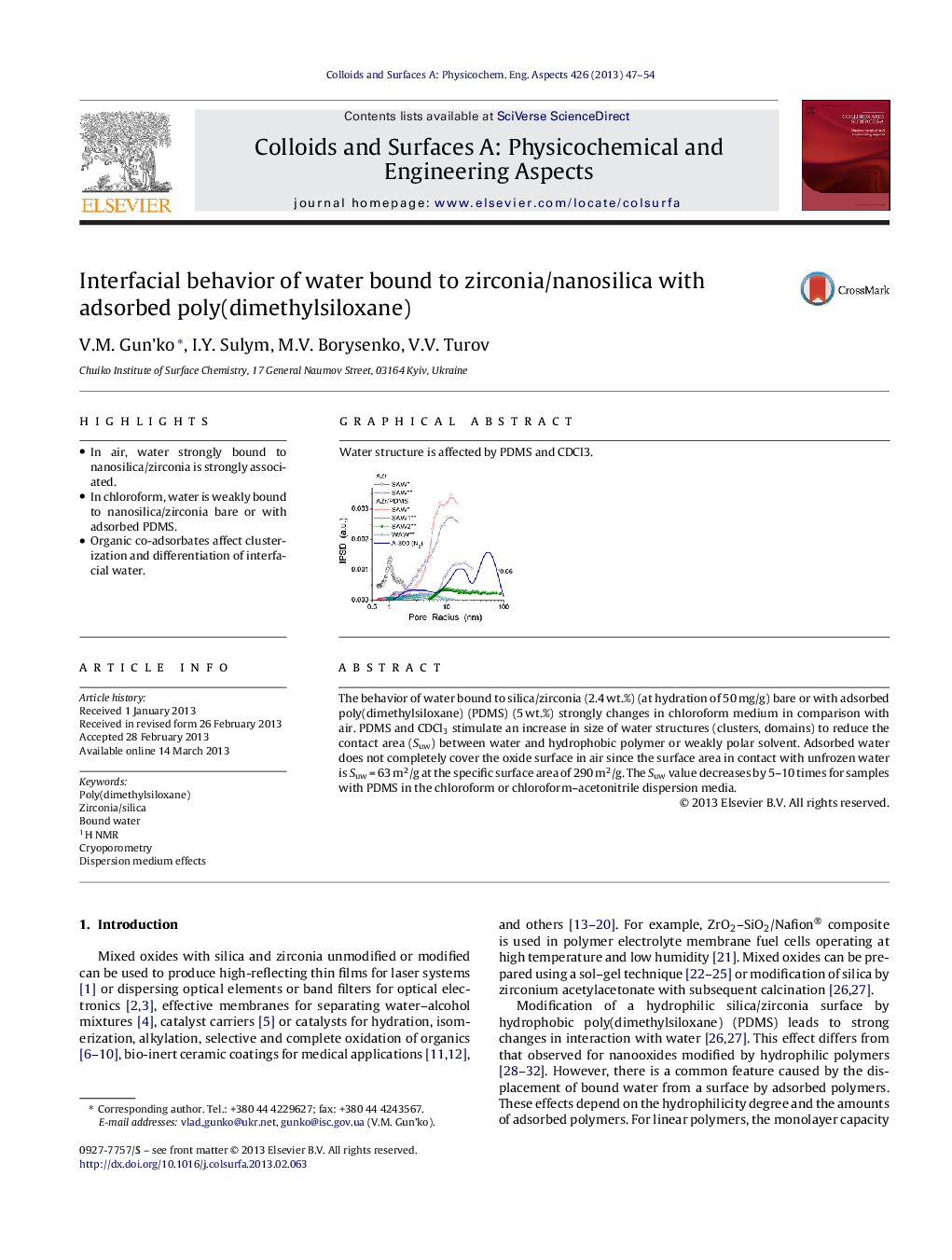| Article ID | Journal | Published Year | Pages | File Type |
|---|---|---|---|---|
| 593638 | Colloids and Surfaces A: Physicochemical and Engineering Aspects | 2013 | 8 Pages |
•In air, water strongly bound to nanosilica/zirconia is strongly associated.•In chloroform, water is weakly bound to nanosilica/zirconia bare or with adsorbed PDMS.•Organic co-adsorbates affect clusterization and differentiation of interfacial water.
The behavior of water bound to silica/zirconia (2.4 wt.%) (at hydration of 50 mg/g) bare or with adsorbed poly(dimethylsiloxane) (PDMS) (5 wt.%) strongly changes in chloroform medium in comparison with air. PDMS and CDCl3 stimulate an increase in size of water structures (clusters, domains) to reduce the contact area (Suw) between water and hydrophobic polymer or weakly polar solvent. Adsorbed water does not completely cover the oxide surface in air since the surface area in contact with unfrozen water is Suw = 63 m2/g at the specific surface area of 290 m2/g. The Suw value decreases by 5–10 times for samples with PDMS in the chloroform or chloroform–acetonitrile dispersion media.
Graphical abstractWater structure is affected by PDMS and CDCl3.Figure optionsDownload full-size imageDownload as PowerPoint slide
